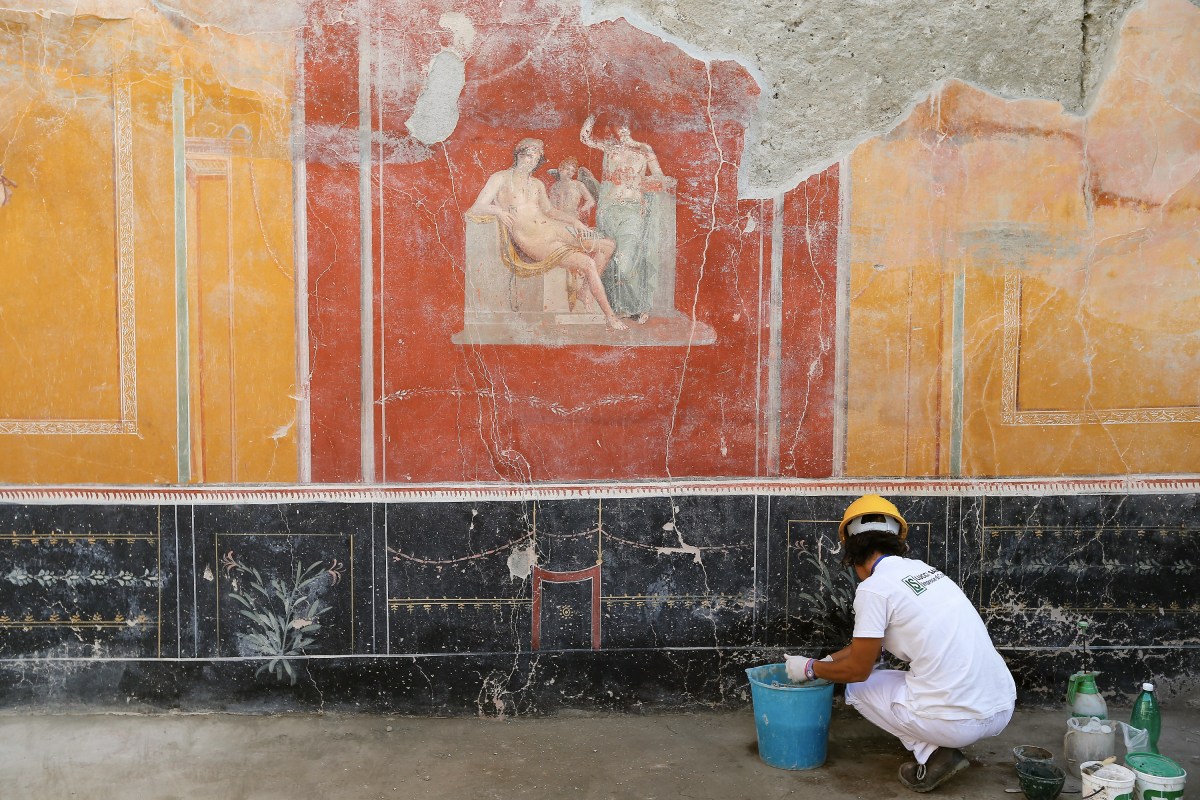An elaborately painted shrine was recently revealed beneath the dust and volcanic ash that covers the ill-fated city of Pompeii.
The design’s vibrancy was found to be intact thousands of years after the tragedy of 79 A.D thanks to the same natural disaster that permanently froze the city in time, the New York Times reported. The volcano’s lava acted as a preservation device for today’s archaeologists.
The shrine, also known as a lararium, was in a large, opulent room, complete with a pool.
Included in the artful image are depictions of Roman gods and wild animals like snakes and a colorful peacock. A dog-headed man who may have been the Egyptian god Anubis was included, too, as the Romans were “fascinated by Egypt,” author of From Pompeii: The Afterlife of a Roman Town, Ingrid Rowland told the Times.
Shrines were staples in every home across Pompeii in ancient days, but “only the wealthiest people could have afforded a lararium inside a special chamber with a raised pool and sumptuous decorations,” Rowland said.
Thanks for reading InsideHook. Sign up for our daily newsletter and be in the know.


















